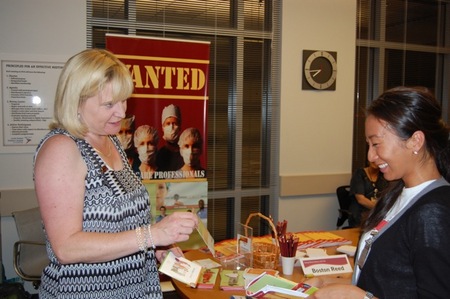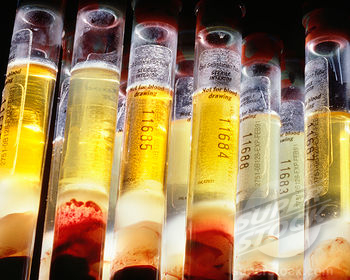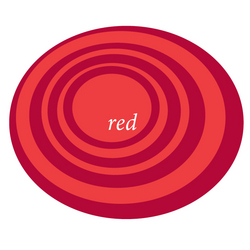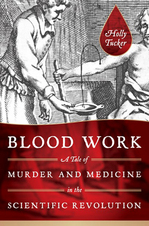Archives
September 30, 2011 at 8:00 am
Published by Stanford Blood Center
By Julie Ruel, Social Media Manager, Stanford Blood Center
About every two seconds somebody in the U.S. needs blood. An estimated 38% of the population is eligible to give blood at any given time but less than 10% actually do. So blood centers must work hard to keep a constant supply on their shelves and ready to go. And as you know, we all rely on the support of generous volunteer donors. At Stanford Blood Center (SBC) specifically, we provide blood only to local hospitals and depend on the busy Bay Area folks (of which just 3% are active blood donors) to keep our inventory healthy.

September 23, 2011 at 9:59 am
Published by Stanford Blood Center
Mike Wu was diagnosed with Chronic Myelogenous Leukemia (CML) in January, 2003, after complain- ing to his doctor about persistent abdominal pain. It was one week before his wed- ding. He began taking a laundry list of prescribed medications that compromised his immune system; he lost about 30 pounds. He and his fiance, Jennifer, postponed the wedding so Mike could get better.

September 20, 2011 at 9:42 am
Published by Stanford Blood Center
My name is Gary Davis and I would like to share my experiences donating blood with my daughter Katie.
September 16, 2011 at 8:00 am
Published by Stanford Blood Center
By Lia Steakley, Social Media Producer, Stanford University School of Medicine

Woolly mammoths, which initially evolved in warm climates where African and Asian elephants now live, migrated to the cold regions of Eurasia in the Pleistocene glacial period. To survive living in the harsh permafrost, the Ice Age icons underwent distinct evolutionary changes such as growing long fur.
September 14, 2011 at 4:15 pm
Published by Stanford Blood Center
By Amanda Baker, Communications Intern, Stanford Blood Center

On Tuesday, Stanford Blood Center (SBC) hosted an encore of the Giving Blood Works promotion at our Hillview Center. This event brought together donors, recruiters, and career counselors for an evening including a networking techniques seminar, a chance to meet with recruiters from local companies, and an opportunity to sign up for half-hour resume critiques with career experts Lisa Stotlar and Ellen Shulman from CareerGenerations.

September 9, 2011 at 11:40 am
Published by Stanford Blood Center
Daniel Paepcke first started giving blood in January, 2003. Eight and a half years and 199 donations later, Daniel paid his regular visit to the Campus Center and made his 200th donation. Quite an accomplishment for the young man who at age 27, is one of our youngest donors to reach this milestone.
September 8, 2011 at 2:11 pm
Published by Stanford Blood Center
By Billie Rubin, Hemoglobin's Catabolic Cousin, reporting from the labs of Stanford Blood Center

Many of us are familiar with the role of red blood cells (RBCs) in taking oxygen throughout the body via the hemoglobin molecules they have inside, and of our platelets' ability to help prevent bleeding through creating clots. But white blood cells (WBCs), our immune system warriors, are a little more mysterious. They make up a complicated system of T-killer cells, T helper cells, antigen-presenting cells, antibody-producing cells, plus others. When a unit of un-coagulated whole blood is spun down to separate components, the white blood cells appear, creating a thin, white layer between the plasma and RBCs.

September 1, 2011 at 4:13 pm
Published by Stanford Blood Center
Pulmonary hypertension, overriding aorta, and pulmonary atresia are a few of the health obstacles in little Maddie's life. She has undergone 11 procedures, including three open-heart surgeries, to correct her cardiovascular defects and has received the lifesaving gift of blood with each of her surgeries.
August 25, 2011 at 10:30 am
Published by Stanford Blood Center
By Billie Rubin, Hemoglobin's Catabolic Cousin, reporting from the labs of Stanford Blood Center

Red, the color of blood, was once thought to have magical powers. Cro-Magnon man painted the sick and dead red, hoping to contain the life force. Early Egyptians painted their bodies with blood to ward off sickness. Later, pastes and dyes were substituted in the practice - a forerunner of makeup. In early England, red coverings were put on beds to treat smallpox, and strips of red cloth were used as cures for scarlet fever.
August 25, 2011 at 10:23 am
Published by Stanford Blood Center
By Julie Ruel, Social Media Manager, Stanford Blood Center

Medicine and murder were two words I did not expect to see together in the title of an NPR talk on the history of blood transfusions. Holly Tucker, a professor at Vanderbilt University in Nashville, was going about her usual business as she researched information for a class lecture on the discovery of blood circulation by an English physician in the 1620s. What she uncovered, purely by accident, led to her book about the history of blood transfusions, "Blood Work: A Tale of Medicine and Murder in the Scientific Revolution".






